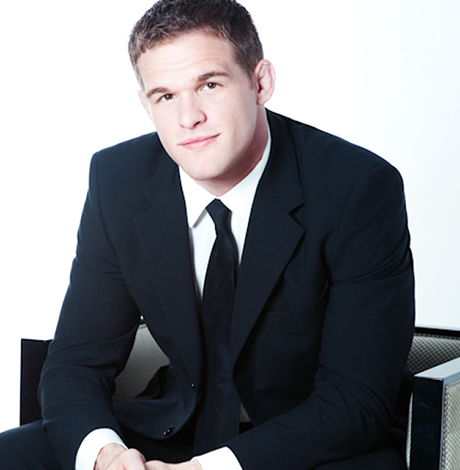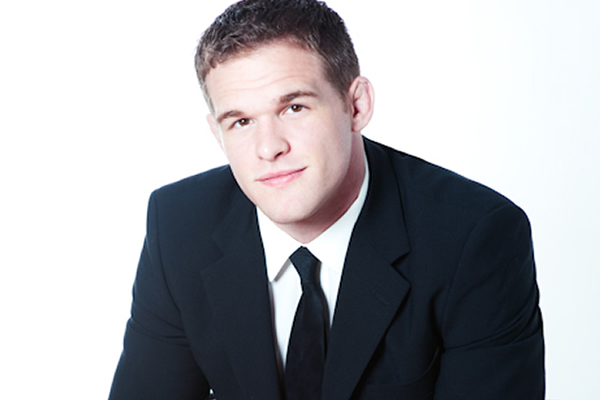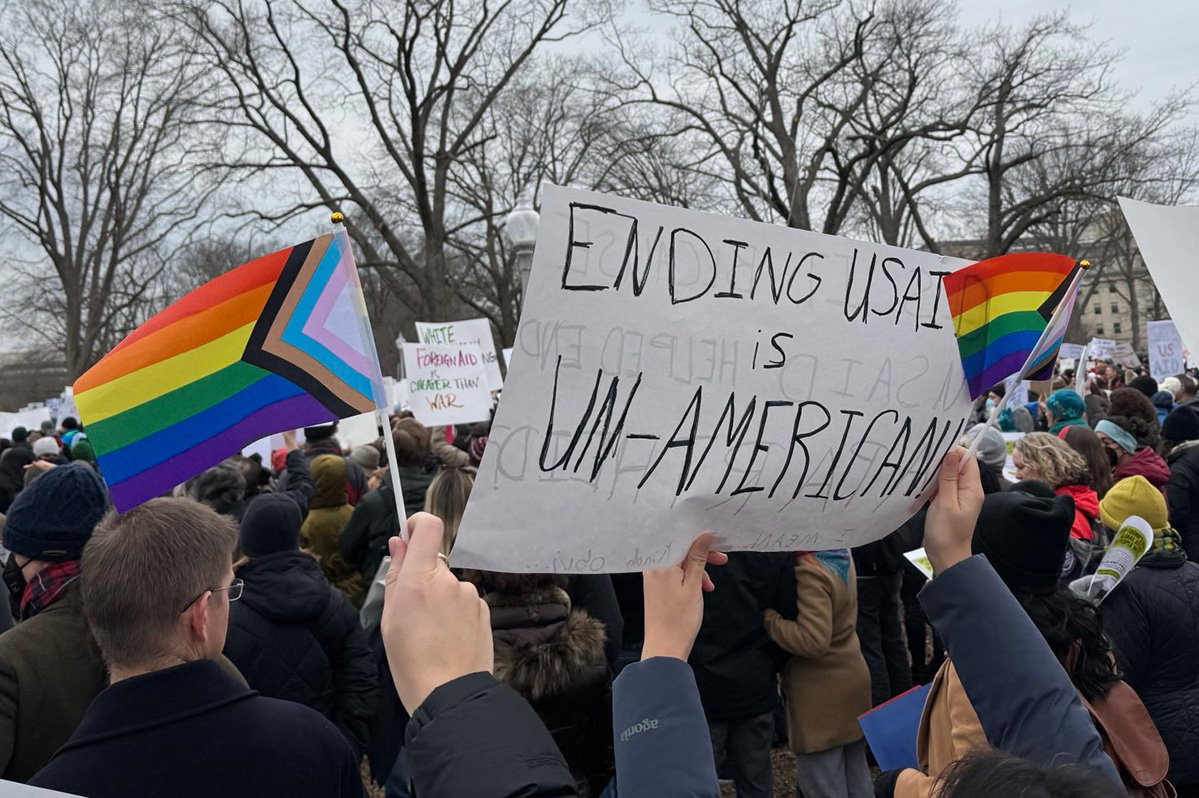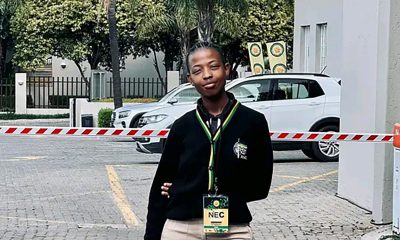Opinions
LGBT equality in sports
A progress report and 3 steps to ending homophobia, transphobia in athletics


Hudson Taylor is executive director of Athlete Ally and guest editor of the Washington Blade.
The pace at which LGBT equality is being achieved in society and under the law has been remarkably accelerated in recent years. Today, the average age of a person coming out is 16, all U.S. states have marriage equality, hate crime legislation has been passed, and “Don’t Ask Don’t Tell” and DOMA have been repealed. These advances are the direct result of an organized strategy across the LGBT civil rights movement, advances that would not be possible without the sacrifice and unwavering determination of those who have made LGBT equality their life’s work.
Despite the staggering progress made in recent years, on the road to LGBT equality we are still forging new paths, and not yet arrived at our ultimate destination. Across the United States, LGBT individuals are not afforded workplace protections and can still be denied housing. Anti-LGBT language is still a common occurrence throughout K-12 education; LGBT youth suffer disproportionately from homelessness; and the majority of LGBT young people still report experiencing anti-LGBT bias and bullying.
Unfortunately, as we begin to assess where our sports culture falls on the continuum of respect, inclusion and equality, it is clear that athletics continues to be one of the last bastions of homophobia, transphobia, and heterosexism.
Below are what I believe to have been successful tactics and philosophies employed by past social justice movements and how they can be applied to sports. I will highlight the particular challenges still facing our work within sports and conclude by positing some of the ways in which individuals and organizations can better work together to maximize the impact and progress of the LGBT sports movement.
Step One: Diversity of Approach
The LGBT civil rights movement has benefitted from a diversity of approaches from the organizations and individuals involved. For sports culture to share similar advancements, we must have equally diverse tactics for our work. Across the movement, there are three primary areas of advocacy: social services, information and education, and civil liberties and social action.
LGBT social services in sports are centered on providing resources and opportunities for those that would otherwise not have them. This includes scholarships for LGBT athletes, creating safe spaces for LGBT individuals, providing sports equipment and putting in place LGBT specific systems of support. This work is crucial as oftentimes the perceived or actual barriers to entry for LGBT individuals are greater than those of their heterosexual counterparts. Unless safe and accessible athletic opportunities are provided, LGBT youth may forego participating in sports for other activities.
The second area of advocacy is that of education and information. The constituents of this work are both LGBT and non-LGBT athletes, coaches, administrators, parents and fans. This work is often comprised of educating communities about the experiences of LGBT individuals in sports, acknowledging the work still needed and highlighting the steps we can take to bring about greater LGBT equality in sports. While there continues to be an emerging field of qualified and passionate educators, the majority of athletic institutions have not yet invested in this type of training. The divide between those who need LGBT education and those who actually receive it, becomes greater when we take into account differences in age, geography, sport and positions of power.
The final area of advocacy is that of civil liberties and social action. This work is chiefly focused on the adoption and implementation of LGBT inclusive policies and best practices. For many institutions this work is centered on having inclusive policies and facilities for transgender athletes, creating appropriate punitive policies for anti-LGBT conduct or clearly articulating an LGBT inclusive non-discrimination policy. For some faith-based institutions, the policy advances look quite different, as prohibition of pre-marital sex forms the foundation for LGBT protections, or lack thereof. It should also be noted that the experiences of our athletic communities extend to life outside of sports, making the city, state, and federal protections of LGBT individuals equally important to the success of the LGBT sports movement.
Step Two: Diversity of Messengers
The success of the LGBT sports movement is contingent upon, in part, finding and elevating diverse voices. While there has never been a successful social justice movement for a minority group without the support of the majority, we must not forget that without the visible testimony of the LGBT community, all our work remains theoretical.
The advancement of LGBT equality in sports is predicated upon reconciling the perception of sports culture, with the reality of sports culture. That is, if the perception is that homophobia, transphobia or heterosexism in sports exists, then LGBT individuals will not be encouraged to share their true selves with their sports community.
To change this, we must find and elevate as many LGBT voices within sports as possible, as well as find and elevate the voices of supportive allies. Because the perception of sports culture is defined by what one sees, hears and experiences, the telling of positive stories will be the connective tissue between each organization and individual’s advocacy approach.
Step Three: Framing the Message
In addition to a diversity of messengers, how the LGBT sports movement collectively frames its messaging is directly proportional to its ability to affect change. Historically, large-scale social change happens in a very particular way. Research suggests that the way a culture changes is not by engaging in conversations of right vs. wrong, but instead by redefining and appealing to the dominant identity of a target audience.
Over the last 10 years, we have seen significant changes to the culture and policies of the majority of Fortune 500 companies. These changes have been made possible by clear and concise messaging articulating the business case for LGBT equality. If we suppose that the dominant identity of a company is to make more money, retain and recruit better talent and appeal to more customers, then the most effective messaging to appeal to corporate culture is that which connects LGBT equality to those business objectives.
Similarly, if we suppose that the dominant identity of athletics is to win more games, recruit better athletes, appeal to more fans and be the best possible teammate, then our most effective messaging within sports will be that which clearly connects LGBT equality in sports with those same athletic objectives. In this way, the efficacy of the LGBT sports movement is contingent upon our ability to make LGBT equality synonymous with athletic success.
Step Four: Understanding Our Obstacles
The continued presence of anti-LGBT bias, bullying and discrimination in sports is not by accident; it’s by design. The institution of sport suffers from three systemic issues. First, it is one of the few environments that is segregated by gender. Second, it is a competitive reward structure designed to rank one athlete over another, due not to the content of their character, but because of physical characteristics. Third, one’s ability to participate in sports is ultimately determined by a third party. Together, these factors create a unique environment within sports in which conforming to a narrowly defined standard of masculinity, femininity, sexual orientation, gender identity and expression is not only strongly encouraged, but often required.
In practice, and because of these factors, male athletes who more readily conform to orthodox concepts of masculinity are likely given more playing time (because that’s how you need to act in order to do well). The increased amount of playing time leads to a disproportionate improvement of skills for those who conform vs. those who do not. The disproportionate improvement of skills leads to increased success, which leads to increased popularity, which leads to an increased likelihood that an athlete will stay with his or her sport through high school and college. Those athletes who compete in high school or college are more likely to go on to become coaches only to teach the next generation of athletes the same value system that afforded them their success. In this way, homophobia, transphobia and heterosexism in sports is cyclical, intergenerational and unlikely to change unless the way in which we think about sports is substantially redefined.
The final obstacle for the LGBT sports movement is the perceived risk of speaking out as an ally or coming out as LGBT, versus the perceived reward. Because our coaches determine participation and our coach’s employment is determined by their athletic director, athletic institutions implicitly disdain uniqueness. If an athlete or coach’s identity or beliefs overshadow their performance as an athlete or coach, they are at risk of losing their livelihood. In this way, conforming to athletic culture and remaining silent on various social justice issues is still unfortunately often the smart decision to ensure longevity of one’s career.
Step 5: The Path to Victory
Ending homophobia, transphobia and heterosexism in sports can be accomplished if we work together. Whether you are a current member of the athletic community, a casual fan or never participated in sports, we all have the ability to help affect positive change within our communities. As the saying goes, “A thousand candles can be lit from a single candle.” Below are a list of actions that if done collectively, will bring us closer to realizing a future of LGBT equality in sport and society.
- Spark Conversations – Personal stories change lives. Pick up a pen and paper and write a letter to your old coach, to the athletic director of your alma mater. Ask for a policy to be changed or training to be implemented. Attend the next PTA meeting and ask what your school is doing to address homophobia, transphobia, and heterosexism in sports. Wear an LGBT-themed T-shirt to the next little league game or ask everyone you know why they think there aren’t more out LGBT athletes and what can be done about it.
- Build Bridges – Find other social justice groups or organizations within your community, get involved with their work, and ask them to get involved with yours. If we are ever to put an end anti-LGBT bias, bullying and discrimination in sports then we need to work together. Ending one form of prejudice is connected to all other forms of prejudice. If we can make our work intersectional, we can maximize its efficacy by building coalitions of change agents.
- Organize and Mobilize – If there is a policy you want to see changed, create a petition. Get others to sign it. If you can organize and mobilize, you have the ability to change the world. This doesn’t mean petition the largest governing bodies of all the sports leagues, this means being strategic. Start small. What do you want to change about your local rec league? What policy should be put in place at the high school? If your community is small, the number of people you need to organize to make an impact becomes far more manageable. Regardless, strength in numbers is strength in advocacy.
Opinions
USAID’s demise: America’s global betrayal of trust with LGBTQ people
Trump-Vance administration dismantled agency after taking office

The U.S. Agency for International Development — proudly my institutional home for several years of my international development career and an American institutional global fixture since November 1961 — is no more.
How will USAID’s closure impact LGBTQI+ people around the world, especially in poor, struggling countries (“the Global South”)? Time will tell, but “dire,” “appalling,” and “shameful” are appropriate adjectives, given the massive increase in HIV/AIDS deaths that follow the callous, abrupt, and unspeakably cruel cut-off of funding for USAID’s health and humanitarian programming in HIV/AIDS prevention, treatment, and care.
Regarding LGBTQI+ people and issues, USAID worked in a tough neighborhood. In Africa alone, more than 30 countries in which USAID had programming still criminalize same-sex relationships, often to the point of imposing the death penalty. These fiercely anti-LGBTQI+ countries share harsh anti-LGBTQI+ punishments with most countries in the Middle East and North Africa. Other countries where USAID formerly worked retain colonial-era sodomy laws.
Where did USAID fit into all this turbulence? The agency was not allowed to transgress local laws, so how could it support the human rights of local LGBTQI+ people? USAID did so by building close and trusting relationships with local LGBTQI+ civil society, and by “superpower advocacy” for the universal human rights of all people, including those of us in the queer community.
I served at USAID’s Africa Bureau under the Obama administration, becoming the only openly transgender political appointee in USAID’s history. In that role, I was privileged to have a platform that caught the astounded attention of both queer people and of anti-LGBTQI+ governments around the world. If the president of the United States can elevate a transgender woman to such a senior position within the U.S. government, that open declaration of acceptance, inclusion, worth, and recognition set a precedent that many in the LGBTQI+ community worldwide hoped their countries would emulate.
Serving as an openly queer person at USAID also afforded me the opportunity to meet with many fiercely anti-LGBTQI+ senior politicians and government officials from African countries who sought USAID funding. Uganda’s first woman speaker of the parliament, Rebecca Alitwala Kadaga and her whole delegation came to see me at USAID in Washington about such funding. I had some very frank (and USAID-approved) “talking points” to share with her and her team about President Obama’s strong and secular commitment to equal human rights for all people. My tense meeting with her was also an opportunity to educate her as to the nature of the transgender, nonbinary, and intersex community — we who are simply classified and discriminated against as “gay” people in Uganda and in most countries in the Global South. I also had the chance to represent USAID in the “inter-agency” LGBTQI+ human rights task team led by openly gay U.S. Ambassador David Pressman, whose effective leadership of that Obama-era initiative was inspirational.
Working closely with professional, capable, and caring USAID career employees such as Ajit Joshi and Anthony Cotton, and with the strong and open support of the USAID Deputy Administrator Don Steinberg, I helped to craft and promote USAID’s very first LGBTQI+ policy. Under President Obama, USAID also created the LGBT Global Development Partnership, a public-private partnership supporting LGBTQI+ civil society groups throughout the Global South. USAID funding also increased for programs promoting LGBTQI+ inclusion, anti-violence, and relevant human rights protections. This programming expanded further (albeit never adequately funded) during the Biden administration under the able leadership of USAID Senior LGBTQI+ Coordinator Jay Gilliam and his team.
So what did it all mean? Has USAID left a footprint for the global LGBTQI+ community? Will its absence matter?
In my view, that answer is an emphatic yes. International development and humanitarian response go to the heart of recognizing, respecting, and caring about universal human dignity. USAID converted those ethical commitments into tangible and meaningful action, again and again, and modelled for the world what it means to truly include all persons.
My time serving at USAID was a high point of my career, being surrounded by the best of American civil servants and foreign service officers. For me, “USAID Forever” remains my battle cry. Let’s start thinking of how we will rebuild it, beginning in three years.
Chloe Schwenke is a professor at Georgetown University’s McCourt School of Public Policy.
Opinions
Community comes together to repair WorldPride history exhibition
Vandals damaged pictures, timeline walls on June 22

Earlier this month, vandals shouting homophobic slurs damaged the 8-foot hero cubes and timeline walls of the Rainbow History Project’s (RHP) WorldPride exhibition “Pickets, Protests, and Parades: The History of Gay Pride in Washington.” The week’s incident was the fifth homophobic attack on the exhibition chronicling DC’s LGBTQ+ History, the vandalism damage was only made worse by the storms this past week.
In response, RHP posted a call online for volunteers and donations and over a dozen volunteers showed up on Saturday to repair the exhibition in its final stretch.
It took three hours, but the group assembled during a heat advisory to bend the fences back into place, fix the cubes and zip tie all the materials together to keep them safe. Some of those who came out to volunteer, Slatt said, were known RHP volunteers but most were total strangers who had attended an event here or there or just wanted to get involved for the first time, one was even in D.C. as an out-of-town guest and after seeing the Instagram call, decided to spend their day lifting some heavy fencing back into place.
When asked why they showed up, volunteer Abbey said: “especially during Pride month, it’s so important to come together as a community, not just to celebrate, but to support each other. To know that this historic exhibit is even able to exist right now under this administration is really amazing. The fact that we’re just able to help continue it in its last leg of being out here is really important.”
“Rainbow History Project does a lot of work for the community,” another volunteer Ellie said, “they show up in a lot of ways that I think we really need right now, so in terms of being asked to come out and do a couple hours of lifting, that is something that we can easily support and do.”
“We put out a call asking for support from the community, and so we didn’t know what we’d get,” Slatt continued, “but strangers have shown up. We were upset, we were crying. We were trying to come up with a battle plan and more and more people have shown up with open arms and empty hands to do this. It’s 95 degrees, we are melting in the heat. It’s just amazing the number of people who have come here.”
If anything, the anonymous exhibit designer said, the people who vandalized the exhibit made the community stronger and mobilized members passionate about preserving and sharing our histories. Their efforts backfired in a big way — bringing together people who had only attended one or two RHP events or had read about the organization online to actively contribute to the work.
It’s a meaningful representation of the history of D.C.’s LGBTQ+ community, one that often starts with a small group of people who come together to protest but soon mobilize their communities and enact monumental change in the nation’s capital.
“If Pride in D.C. started with 10 people picketing the White House,” Slatt remarked, “you just got 12 more to join the gay history movement.”
This was especially poignant, another volunteer Mattie said, on the week that the Supreme Court issued a decision allowing Tennessee to ban puberty blockers and hormone therapy for minors seeking gender affirming care. It was a devastating moment for the LGBTQ+ community who mobilized once more in front of the Supreme Court this past Friday.
“It’s been actually really important to see this community come together in the face of direct attack on our history in the wake of direct attacks on our rights,” Mattie said, “and we stand up to that. We come together, and we represent. That is so important to maintaining our strength and our community throughout trying times now and ahead.”
When asked about how community members can support RHP’s work and repair the damage long-term to the exhibit, Slatt urged people to donate to RHP, to volunteer as exhibit monitors, and to come visit the exhibit.
“We’ve been doing this for 25 years. This is our 25th anniversary, and if it weren’t for volunteers donating their time and their talents, if it weren’t for small dollar donors, we would never have gotten anything done,” Slatt said. “I’d say to anyone out there that we are on this plaza all through Independence weekend, we are here through the Smithsonian Folklife Festival, people can come on down.”
Slatt and other volunteers will be leading tours each evening at 7 p.m. at Freedom Plaza, and people can pre-order the exhibition catalog right now, which will be delivered in time for LGBTQ+ History Month in October.
Emma Cieslik is a D.C.-based museum worker and public historian.

Independence Day, commonly known as the Fourth of July, is a federal holiday commemorating the ratification of the Declaration of Independence by the Second Continental Congress on July 4, 1776, establishing the United States of America. The delegates of the Second Continental Congress declared the 13 colonies are no longer subject (and subordinate) to the monarch of Britain, King George III and were now united, free, and independent states. The Congress voted to approve independence by passing the Lee resolution on July 2, and adopted the Declaration of Independence two days later, on July 4.
Today we have a felon in the White House, who wants to be a king, and doesn’t know what the Declaration of Independence means. Each day we see more erosion of what our country has fought to stand for over the years. We began with a country run by white men, where slavery was accepted, and where women weren’t included in our constitution, or allowed to vote. We have come far, and next year will celebrate 250 years. Slowly, but surely, we have moved forward. That is until Nov. 5, 2024, when the nation elected the felon who now sits in the Oval Office.
There are some who say they didn’t know what he would do when they voted for him. They are the ones who were either fooled, believing his lies, or just weren’t smart enough to read the blueprint which laid out what he would do, Project 2025. It is there for everyone to see. There should be no surprise at what he is doing to the country, and the world. Last Friday his Supreme Court, and yes, it is his, the three people he had confirmed in his first term, gave him permission to be the king he wants to be. The kind of king our Declaration of Independence said we were renouncing. A man who with the stroke of a pen can ruin thousands of lives, and change the course of America’s future. A man who has set back our country by decades, in just a few months.
So, I understand why many are suggesting there is nothing to celebrate this Fourth of July. How do we have parties, and fireworks, celebrating the 249th year of our independence when so many are being sidelined and harmed by the felon and his MAGA sycophants in the Congress, and on the Supreme Court. Yes, there are those celebrating all he is doing. Those who want to pretend transgender people don’t exist, and put their lives in danger; those who think it’s alright to take away a women’s right to control her body, and her healthcare; those who think parents should be able to interfere on a daily basis with their children’s schooling and wipe out the existence of gay people for them. Those who pretend there was a mandate in the last election, when it was only won by about 1 percent. Those who think disparaging veterans, firing them, and taking away their healthcare, is ok. Those in the LGBTQ community like Log Cabin Republicans, who think supporting a racist, sexist, homophobe is the right thing to do.
So, what do we, as decent caring people, do this Fourth of July. What do we say to those who are being harmed as we celebrate. What do we say to those trans people, those women, those immigrants who came here to escape their own dictators, and are now finding they have come to a country with its own would-be dictator. I say to them, please don’t give up on America. Don’t give up on the possibility decent loving people in our country will finally wake up and say, “enough.” That the majority of Americans will remember we fought a revolution to escape a king, and we fought a civil war to end slavery. That we moved forward and gave women the right to vote, and gave the LGBTQ community the right to marry. Don’t give up on the people that did all that, and think they won’t rise up again, and tell the felon, racist, homophobe, misogynist, found liable for sexual assault, now in the White House, and his sycophants in congress, and his cult, that we will take back our country in the 2026 midterm elections. That we will vote in large numbers, and demand our freedom from the tyranny that he is foisting on our country.
So yes, I will celebrate this Fourth of July not for what is happening in our country today, but rather for what our country actually stands for. Not for birthday parades, and abandonment of the heroes in Ukraine in support of dictators like Putin. But for the belief the decent people in our country will rise up and vote. That is what I will celebrate and pray for this Fourth of July. That is what I think the fireworks will mean this July Fourth. I refuse to accept defeat the same way our revolutionary soldiers wouldn’t, and the way our troops in the civil war wouldn’t till the confederacy was defeated.
I will celebrate this Fourth of July because I refuse to accept we will not defeat those who would destroy our beautiful country, and what it really stands for.
Peter Rosenstein is a longtime LGBTQ rights and Democratic Party activist.
-

 Virginia1 day ago
Virginia1 day agoDefying trends, new LGBTQ center opens in rural Winchester, Va.
-

 South Africa4 days ago
South Africa4 days agoLesbian feminist becomes South African MP
-

 Travel3 days ago
Travel3 days agoManchester is vibrant tapestry of culture, history, and Pride
-

 Opinions2 days ago
Opinions2 days agoUSAID’s demise: America’s global betrayal of trust with LGBTQ people












